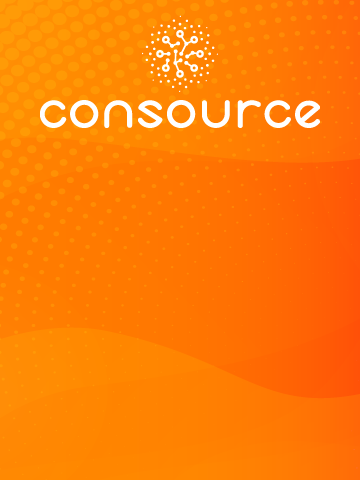lancer un projet de conseil lancer un projet de conseil lancer un projet de conseil
lancer un projet de conseil lancer un projet de conseil lancer un projet de conseil
Se lancer dans un projet de conseil n'exige peut-être pas l'expertise d'un scientifique, mais cela demande une approche stratégique et un esprit de collaboration. En tant que sponsor ou gestionnaire d'un projet, le succès dépend non seulement de vos efforts individuels, mais aussi de votre capacité à travailler en toute transparence avec vos collègues pour atteindre un objectif commun. Dans un souci de maximisation de la valeur, nous vous dévoilons neuf étapes essentielles pour lancer un projet de conseil qui vous placera d'emblée sur la voie de la réussite.
Gardez donc les yeux fixés sur le prix - la valeur - et plongeons dans le plan d'un projet de conseil qui promet de produire des résultats au-delà des attentes.
1. Initier la gestion du changement à un stade précoce
Dans les projets de conseil, l'adage "Bien commencé est à moitié fait" a un poids de vérité souvent sous-estimé. S'engager dans un processus de gestion du changement dès le début du projet - plus précisément, pendant la phase de définition du projet - n'est pas simplement une étape procédurale ; il s'agit d'une stratégie fondamentale pour garantir l'alignement organisationnel et favoriser une adhésion inébranlable. Cette approche n'est peut-être pas la norme, mais son impact sur la réussite d'un projet ne peut être surestimé.
Associer les parties prenantes et les équipes avant même que les consultants ne mettent le pied dans les locaux ne se limite pas à préparer le terrain ; cela permet de semer les graines de l'appropriation et de l'engagement. En les associant à la définition des besoins et à la sélection du partenaire de conseil, vous ne vous contentez pas de consulter leur expertise ; vous renforcez leur investissement dans le résultat du projet. Ce sentiment d'appropriation est un puissant catalyseur de succès, qui transforme les observateurs passifs en contributeurs actifs et en champions de l'initiative.
2. Définir ses besoins
La définition précise du champ d'application, des résultats attendus, du calendrier et du budget au début de votre projet de conseil est plus qu'une nécessité procédurale - c'est le fondement d'une exécution réussie du projet. Cette étape cruciale exige la constitution d'une équipe de base composée des principales parties prenantes afin de parvenir à un consensus sur les objectifs du projet, le calendrier et les contraintes financières.
Même lorsque vous faites appel à une expertise externe pour piloter le projet, les règles d'or de la gestion de projet restent non négociables. La première chose à faire ? Identifier le défi à relever et formuler des objectifs clairs et réalisables. Un écueil courant qui fait dérailler de nombreux projets de conseil est un champ d'application trop nébuleux ou trop ambitieux.
Une portée bien définie agit comme l'étoile polaire de votre projet, guidant chaque phase du processus d'approvisionnement et garantissant que toutes les parties - internes et externes - sont alignées sur un objectif commun. En définissant rigoureusement les critères de réussite, vous posez les jalons d'un projet qui n'est pas simplement achevé, mais qui l'est dans un but précis, ce qui augmente considérablement les chances d'obtenir l'impact souhaité.
3. Susciter l'enthousiasme pour le projet
En choisissant de collaborer avec des consultants, vous recherchez plus qu'une simple main-d'œuvre supplémentaire ; vous recherchez leurs prouesses analytiques uniques, leur expertise spécialisée et leurs compétences supérieures en matière de communication. Il est essentiel de canaliser ces talents vers des tâches qui bénéficient réellement de leurs capacités. L'affectation de consultants à des tâches subalternes n'est pas seulement une mauvaise utilisation de leur talent (et de votre budget), mais risque également de diminuer leur intérêt et leur engagement pour votre projet. Un tel désalignement pourrait conduire votre initiative à passer au second plan de leur liste de priorités, ce qui pourrait compromettre la qualité et la profondeur de l'expertise apportée à votre projet.
Pour les tâches qui nécessitent une simple augmentation de la main-d'œuvre ou qui sont principalement axées sur les données sans nécessiter de compétences de conseil de haut niveau, l'exploration de plateformes de freelance telles que Catalent ou TalMix, ou même d'agrégateurs tels qu'Eden McCallum ou A-connect, pourrait être un choix plus approprié. Ces plateformes permettent d'accéder à des personnes qualifiées prêtes à s'attaquer à des projets de moindre envergure ou à fournir un soutien intérimaire, ce qui garantit que vous n'engagez pas trop de ressources de conseil précieuses dans des tâches qui ne tirent pas pleinement parti de leur expertise.
N'oubliez pas que la portée de votre projet et la marge de manœuvre créative que vous accordez dans votre appel d'offres peuvent influencer de manière significative l'engagement et l'enthousiasme des consultants. Un projet qui présente un défi complexe ou une marge de manœuvre pour des solutions innovantes est plus susceptible d'attirer des consultants de haut niveau et de garantir leur engagement total, ce qui renforce le succès global et l'impact de votre initiative.
4. Organiser un concours
Lancer un concours parmi les fournisseurs potentiels de services de conseil n'est pas une simple opération de sourcing ; c'est une étape stratégique conçue pour contribuer directement à la réussite du projet. Ce processus concurrentiel a un double objectif : il vous permet de comparer différentes approches et différents prix, ce qui vous assure une base d'évaluation solide, et il vous garantit que vous pourrez choisir parmi une sélection de propositions solides. La véritable valeur de cette concurrence ne réside pas seulement dans l'acte de comparaison, mais dans la qualité et la pertinence des propositions que vous recevrez.
Pour y parvenir, il est impératif de créer un terrain de jeu équitable où tous les candidats peuvent présenter leurs meilleures solutions dans des conditions équitables. Cela signifie qu'il faut s'engager activement avec les consultants potentiels qui sont non seulement capables, mais aussi les mieux adaptés aux défis et aux objectifs spécifiques de votre projet. Il est essentiel de leur fournir les informations, le temps et le contexte adéquats pour obtenir des propositions à la fois innovantes et en phase avec les besoins de votre projet.
C'est pourquoi, l'organisation d'un concours est bien plus qu'une étape d'approvisionnement ; c'est une phase fondamentale qui influence la trajectoire de votre projet. En veillant à ce que tous les participants aient la possibilité de comprendre pleinement les exigences de votre projet et d'y répondre, vous posez les bases nécessaires à la sélection d'un partenaire de conseil qui ne se contentera pas de répondre à vos attentes, mais qui les dépassera, conduisant ainsi votre projet vers sa réussite finale.
5. Utiliser le bon processus
Au cours de la phase initiale d'un projet de conseil, il faut souvent faire face à des défis commerciaux ambigus et à des projets dont la portée n'est pas définie. Il n'est pas rare de se retrouver dans une situation où la viabilité du projet est incertaine ou ses contours ne sont pas encore complètement définis. C'est là que la demande d'information devient un outil précieux. En sollicitant un large éventail de points de vue et d'informations auprès de partenaires consultants potentiels, une demande de renseignements peut éclairer la voie à suivre, en vous aidant, vous et votre organisation, à affiner votre approche du défi imminent et à favoriser une compréhension collective de la meilleure voie à suivre.
L'utilisation efficace d'une demande d'information vous permet de recueillir des informations essentielles susceptibles de déterminer l'orientation et la portée du projet. Les consultants peuvent ainsi partager leurs premières réflexions et méthodologies, ce qui permet de susciter un consensus interne et d'affiner la stratégie du projet. En outre, ce processus présente l'avantage supplémentaire de rationaliser le processus de sélection. En évaluant les réponses à votre appel d'offres, vous pouvez identifier les sociétés de conseil qui correspondent le mieux aux objectifs et aux capacités de votre projet, ce qui vous permet de réduire le nombre de candidats avant de passer à l'étape de l'appel d'offres.
Toutefois, il est essentiel d'aborder le processus d'appel d'offres dans un esprit d'équité et d'ouverture. Veillez à ce que tous les cabinets de conseil participant à votre appel d'offres aient la même possibilité de comprendre vos besoins et d'apporter leurs idées. Cette approche équitable favorise non seulement un environnement concurrentiel sain, mais préserve également la réputation de votre organisation en évitant de donner l'impression qu'il s'agit d'un simple "ramassage de cerveaux" sans véritable engagement ou intention de collaborer.
Une fois que vous aurez exploité les informations tirées de la demande d'information et que vous aurez une vision plus claire de la portée du projet, vous serez mieux à même d'estimer les ressources de conseil nécessaires et l'investissement requis.
6. Clarifier la répartition des rôles
Dans le cadre des projets de conseil en approvisionnement, les secteurs d'activité et les services d'approvisionnement assument chacun des rôles distincts et essentiels, formant un partenariat vital pour la réussite du projet. Les secteurs d'activité sont le fer de lance de l'entreprise, définissant méticuleusement les besoins du projet et brossant un tableau plus large des défis sous-jacents à relever. Ils préparent le terrain en formulant les résultats souhaités et en veillant à ce que l'appel d'offres s'inscrive dans les objectifs stratégiques de l'entreprise. Leur connaissance de l'essence du projet leur permet d'examiner et de présélectionner les consultants, en évaluant les propositions non seulement en fonction de leur mérite, mais aussi de leur capacité à s'aligner sur la vision de l'entreprise.
Pendant ce temps, les achats jouent le rôle d'orchestrateur stratégique, affinant les besoins identifiés par les secteurs d'activité et les formalisant dans l'appel d'offres. Ils explorent le paysage du conseil, suggèrent des candidats potentiels et facilitent une comparaison objective sur la base des critères établis par les secteurs d'activité. Tout en veillant à la conformité et à l'intégrité des processus, les achats gèrent l'appel d'offres en s'appuyant sur une connaissance approfondie du marché, en allant au-delà des propositions pour négocier des conditions favorables qui allient rentabilité et qualité.
7. Prendre le temps de bien faire les choses
L'élaboration d'un calendrier pour le processus d'appel d'offres en matière de conseil nécessite un équilibre entre structure et flexibilité. L'essentiel est de laisser suffisamment de temps aux consultants pour comprendre les complexités du projet et élaborer des propositions réfléchies, en particulier pour les projets complexes qui bénéficient d'une période de questions et réponses rigoureuse. Ce dialogue permet non seulement de clarifier les attentes, mais aussi d'améliorer la capacité des consultants à répondre avec précision.
Pour les petits projets, un délai rapide d'environ une semaine peut suffire. Les projets standard exigent généralement un délai plus généreux de deux semaines, ce qui permet aux consultants d'approfondir les détails. Toutefois, pour les initiatives de grande envergure telles que les PMI ou les transformations à l'échelle de l'entreprise, l'extension du délai de réponse à trois ou quatre semaines reconnaît l'ampleur et la complexité de l'entreprise, donnant aux consultants l'occasion de proposer des solutions réellement complètes.
Il est également prudent de prévoir des discussions itératives au-delà de la soumission initiale de la proposition. Ces échanges permettent de s'assurer que les propositions sont non seulement affinées, mais aussi alignées sur l'évolution de la compréhension de la portée et des objectifs du projet. Un calendrier bien rythmé ne sert donc pas seulement d'échéancier, mais aussi de cadre pour cultiver une relation collaborative et productive avec des partenaires de conseil potentiels.
8. Clarifier la charge de travail et la gouvernance dans les propositions
Exiger des consultants qu'ils fournissent un compte rendu détaillé de la charge de travail prévue et de la structure de gouvernance dans leurs propositions est une mesure essentielle pour garantir la transparence et permettre une évaluation équitable de la valeur offerte. Ce niveau de détail permet non seulement de comparer les propositions entre elles, en particulier en termes de prix, mais aussi de définir des attentes claires quant à la profondeur et à l'étendue de l'assistance consultative à fournir.
Il est essentiel que les propositions précisent les rôles et responsabilités spécifiques que votre équipe assumera et le niveau d'engagement des consultants tout au long du cycle de vie du projet. Cette granularité vous aide à discerner l'intensité des ressources requises et la rigueur de la supervision de la gestion à laquelle vous pouvez vous attendre. Une compréhension approfondie de ces facteurs garantit que l'approche du cabinet de conseil choisi s'aligne sur la capacité de votre organisation et que le prix proposé reflète l'étendue réelle du soutien et de la collaboration.
9. Affirmer son leadership
Affirmer le leadership du client dans le processus de conseil est un impératif sans équivoque, qui garantit que l'engagement se déroule selon vos conditions et conformément à votre cahier des charges. Il est primordial d'établir dès le départ que votre organisation mène la conversation, en fixant le rythme et en encadrant le contenu de toutes les discussions. Pour ce faire, il convient d'exposer clairement votre processus à la société de conseil, en désignant un point de contact unique qui respectera vos lignes directrices et coordonnera toutes les communications.
Dans un souci d'équité et de transparence, il est essentiel d'empêcher les consultants de contacter indépendamment les membres de votre équipe pour obtenir des informations supplémentaires, ce qui pourrait leur donner un avantage indu ou entraîner un déséquilibre de l'information. Un tel protocole permet non seulement de préserver l'intégrité du processus, mais aussi de s'assurer que toutes les sociétés de conseil travaillent sur un pied d'égalité et ont accès aux mêmes informations.
Il est tout aussi important de respecter les conditions générales de votre organisation. Votre propre documentation, reflétant les politiques internes, doit régir la mission. Par exemple, le plafonnement des frais de voyage à un pourcentage prédéterminé et l'exigence d'une approbation préalable garantissent que les dépenses restent contrôlées et conformes à la politique de l'entreprise. L'application uniforme de ces dispositions à toutes les sociétés de conseil permet de respecter une norme d'équité et d'éviter toute partialité dans le processus de sélection.
Nous vous recommandons de regarder l'un de nos derniers webinaires, "Comment gérer un projet de conseil en tant que client ?
Conclusion : Lancer un projet de conseil
Le lancement d'un projet de conseil marque le début, et non la fin, de votre parcours vers la réussite. En suivant méticuleusement les neuf étapes décrites dans ce guide, vous avez posé des bases solides pour la trajectoire de votre projet. Vos équipes internes sont alignées, les besoins et les attentes du projet sont parfaitement clairs pour vous et vos consultants, et les consultants ont été soigneusement choisis pour répondre aux exigences de votre projet.
En substance, vous avez atténué près de la moitié des raisons courantes pour lesquelles les projets échouent. Cependant, il vous incombe maintenant de gérer efficacement le projet et d'en tirer toute la valeur. La phase suivante est entre vos mains, où des pratiques de gestion de projet diligentes garantiront que votre projet reste sur la bonne voie et produise les résultats escomptés.
N'oubliez pas que la réussite des projets de conseil dépend non seulement de leur lancement, mais aussi de leur exécution et de leur gestion. Et si vous cherchez des conseils pour maîtriser la gestion de projet, ne vous inquiétez pas : nous vous proposons un autre article très instructif. Alors, prenez les choses en main, restez concentrés et poursuivons notre voyage vers l'obtention de résultats remarquables dans vos projets de conseil.

Comment Consource peut-elle vous aider ?
L'achat de services de conseil diffère de l'achat de produits standard. Vous investissez dans des services immatériels, ce qui rend difficile la mesure de l'impact. C'est pourquoi le lancement d'un projet de conseil requiert une grande prudence. Entrer Consource - une plateforme tout-en-un adaptée à vos besoins en matière de conseil. Consource accélère le sourcing de consultants par 50% grâce à son interface intuitive, son portail en libre-service et ses bibliothèques de modèles. Recherchez les meilleurs consultants de manière compétitive en combinant votre panel avec notre réseau étendu.








0 commentaires